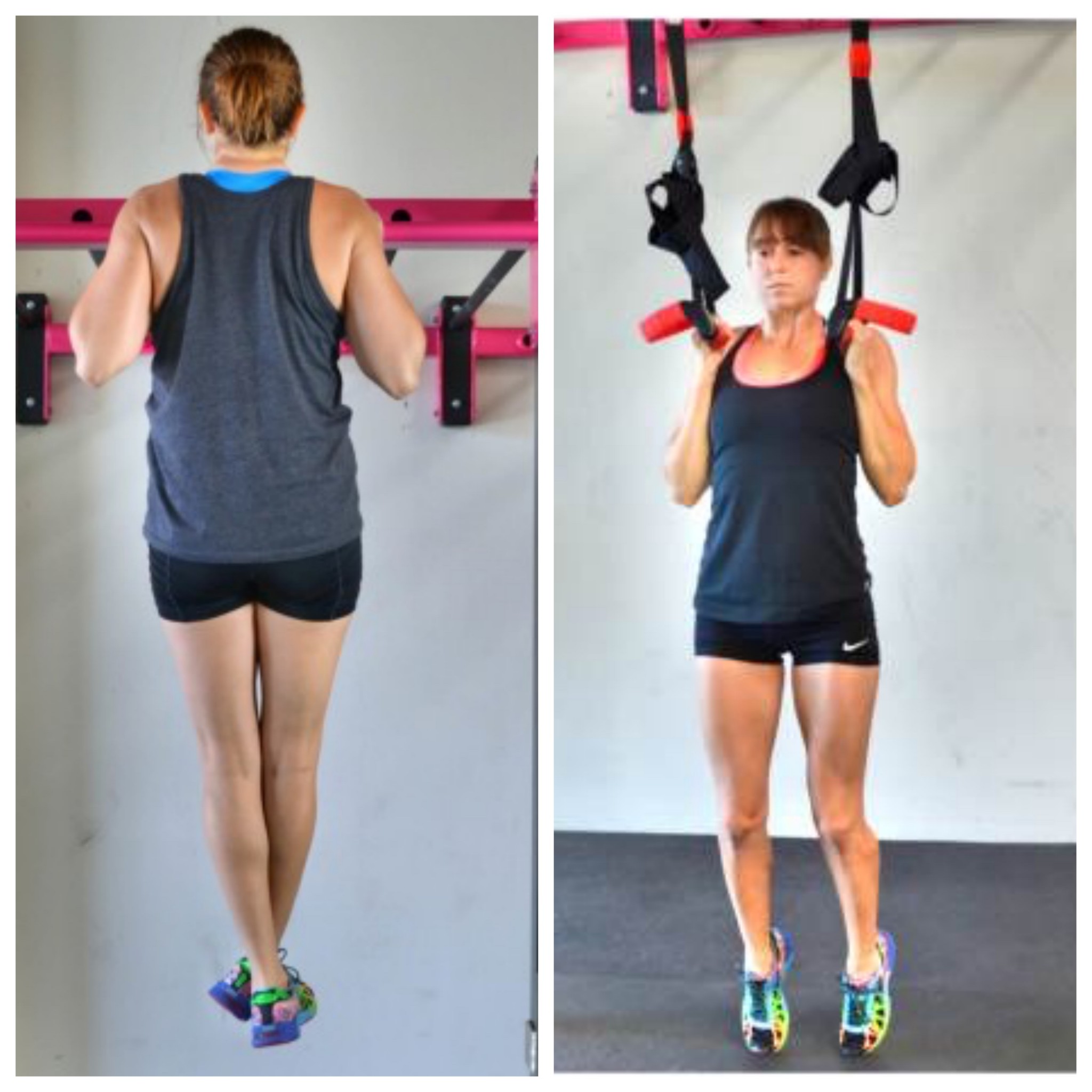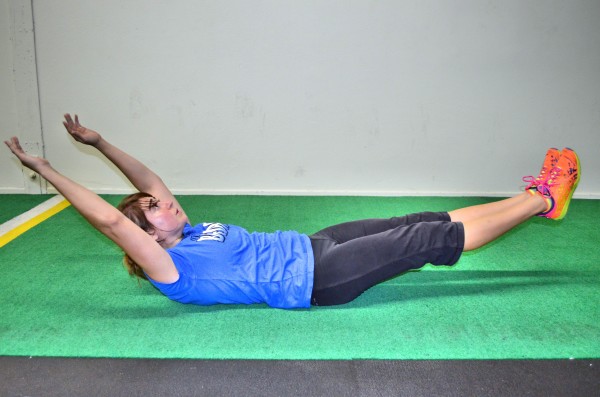
Did you know core strength is ESSENTIAL to improving your pull ups?…
Use These 4 Moves To Build Your Core Strength And Improve Your Pull Ups!
These Core Moves will help you build not only a lean, strong core, but also improve your pull ups!
Often when we want to improve our pull ups, we go right to the assisted machine or even right to focusing on building our back strength. And often when we want to strengthen our core, we turn to crunches, sit ups and planks.
But by doing all of these things, we are missing out on a great way to not only strengthen our core, but also improve our pull ups!
Check out these moves below for a great way to build a rock-solid core while also working toward that first, or even that 15th, pull up!
4 Core Exercises To Improve Your Core Strength AND Your Pull Ups:
#1: Pull Up And Hold
So you may be thinking, “I can’t do a pull up so I can’t do this hold.”
But that’s just not the case!
The Pull Up and Hold is a great way to activate your back, strengthen your lats and even work your core! We often forget how core intensive pull ups are until we do this hold and feel the muscles around our ribs the next day as well as our abs! Plus, the Pull Up and Hold is a great way to work on getting your chin over that bar when you practice your pull ups!
To do the Pull Up and Hold, set up at the top of the Pull Up with your chin above the bar and your chest pressed out. You do not need to do a pull up to set up at the top. Then hold there with your chin over the bar or even the bar at your chest. Keep your core tight and let your legs hang down as you hold your chin above the bar. Do not tuck your knees up.
Make your back and core really work with this move. Do not let your shoulders start to shrug as you hold. If you start to lose the hold, lower yourself down as slowly as you can and then perform a dead hang. If you can’t yet handle your full weight for the hold, lightly touch a foot down to the ground or try a mid pull up or even dead hang hold to start!

#2: Leg Lowers PLUS

Leg Lowers PLUS are one of the best ways to toast your abs, work your Serratus Anterior and even get your lats activated and working.
Whether you want to build rock-solid abs or improve your pull ups, these are a must-do move!
To do the Leg Lower Plus, lie on your back on the ground, holding a suspension trainer handle in each hand. Extend your arms down in front and by your sides, pressing down on the handles so you feel your arms and lats engage.
Then lift your toes up toward the ceiling rolling all the way up on to your shoulders. Get your body as straight up toward the ceiling as you can while pushing down on the straps. Slowly lower your butt back down to the ground and then slowly lower your legs down in front of you. Keep your legs straight the entire time and make sure to press down on the handles to keep your lats engaged.
Engage your abs so you don’t feel this move in your low back. Lower your legs until your heels are an inch off the ground and then raise your toes back up toward the ceiling and your back up off the ground. Keep your legs straight and tension on the suspension trainer straps the entire time. Beginners may need to bend their knees slightly or not go as low if they feel their low backs engaging.
#3: Push Up Holds
Push ups to improve your pull ups!?! HECK YES!
Push ups are also basically moving planks so they are a great way to build core strength. And when you HOLD at specific points in the push up, you can make your core work even harder to stay engaged and working! Make sure to feel around your rib cage and even your back working to support your shoulders as you hold at any point in the push up.
The three main holds I use are:
- High Push Up Hold – Set up at the top of a push up with your feet together and your hands outside your chest. Your body should be in a nice straight line from your head to your heels (with your legs straight). Engage your abs, glutes, quads and back. Do not shrug your shoulders. Make sure your legs and abs are engaged and that you are driving back through your heels not coming forward onto your toes. Do not tuck your chin.
- Mid Push Up Hold – Set up at the top of a push up with your feet together and your hands under your shoulders and just outside your chest. With your body in a nice straight line from your head to your heels, bend your elbows to about 90 degrees and lower and hold. Do not let your hips sink or your butt go up toward the ceiling as you hold at this mid-point. Do not tuck your chin or let your elbows flare way out. You want your arms and body to create an arrow shape.
- Bottom Push Up Hold – Set up at the top of a push up and then, keeping your body in a nice straight line and everything engaged, lower down until your chest is an inch off the ground. Make sure to engage your glutes and quads to keep your body in a nice straight line. Do not tuck your chin, let your hips sag toward the ground or your butt go up in the air. Do not let your elbows flare way out as you hold. Really focus on engaging your entire core as you hold.

#4: Banana

The Banana is one of the toughest and best moves to get your entire core working together properly, which is not only key if you want a strong core, but also important if you want to improve your pull ups!
To do the Banana, and improve your mind-body connection so that you can engage your entire core (everything from your shoulders to your knees), start lying on your back with your legs out straight and your arms reaching overhead on the ground. Your legs should be together and your arms should be right by your head.
Press your low back into the ground and draw your belly button in toward your spine as you lift your legs and arms up off the ground. Your neck and head should be in a neutral position between your arms and your legs should be together and out straight a few inches off the ground.
Hold here, squeezing your legs together as you try to get your shoulder blades up off the ground while keeping your low back against the ground and abs engaged. Beginners may find they need to lift their legs up higher toward the ceiling or bend their knees to keep their low back against the ground and their abs engaged. Beginners can also try an easier variation of the Pelvic Tilt if they feel their low back taking over.
